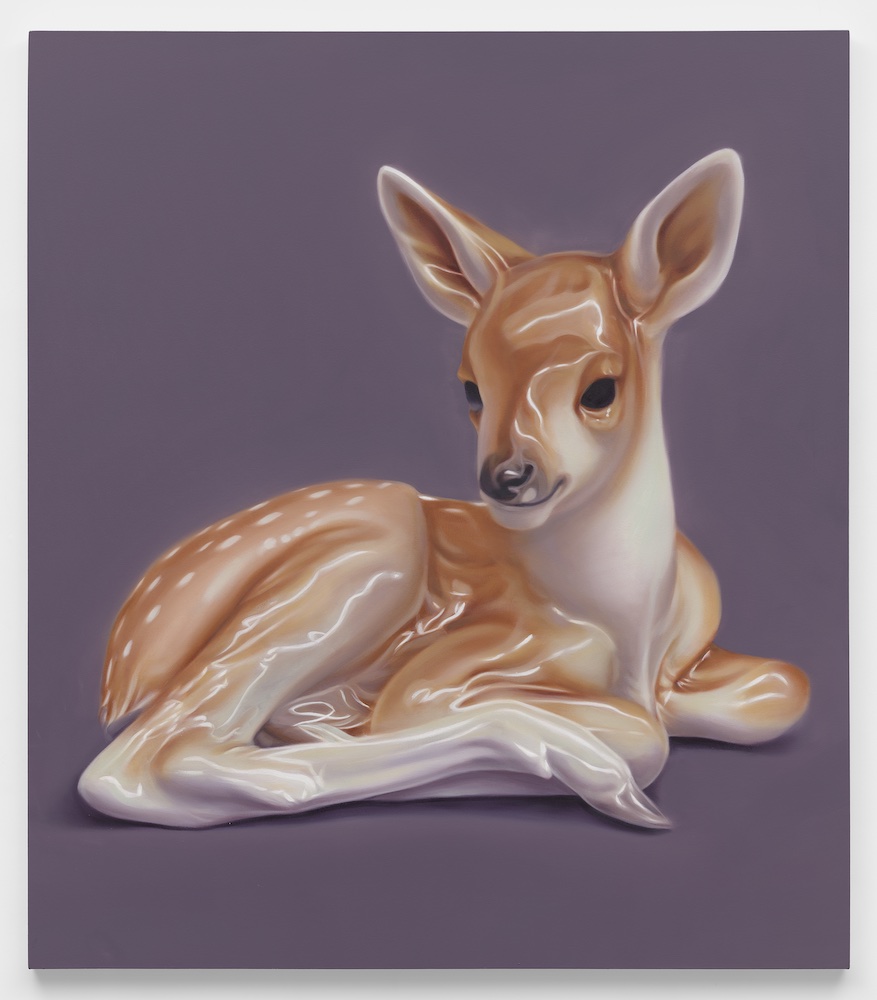Robert Russell is a Los Angeles painter whose conceptually based process often begins with an internet search. Be it for other people named Robert Russell, artist’s monographs, tea cups, or for his current exhibition, Allach porcelain figurines, Russell culls online sources for imagery which he then transforms into large-scale paintings.
The images that comprise “Porzellan Manufaktur Allach”, come from auction catalogues offering the few remaining, and now extremely rare, figurines produced in Germany in the 1930s and 1940s using concentration camp labor in factories funded by former Nazi party leader Heinrich Himmler. Originally, the figurines were meant to celebrate the ‘purity’ of German culture and were given as gifts among SS soldiers. They often took the form of cute animals like rabbits and deer and were depicted with large eyes and complacent expressions. Cognizant of the figurine’s loaded history, Russell wanted to contrast the horror with the beauty of his paintings.
Russell speaks about his works as “painterly interpretations of photographic images.” To create the final compositions, he manipulates the originals in Photoshop, removing backgrounds and replacing them with somber colors while adjusting the contrast so the painted animals ‘pop’ in relation to the blank spaces they occupy. What is so striking—as well as off-putting—about the painted figurines is their scale, and the shifts that occur in the process of transforming the original objects (which are around twelve inches high) to their photographic documentation on a computer screen to giant-sized paintings.

Robert Russell, Liegendes Rehkitz, 2022. Courtesy of the artist and Anat Ebgi. Photo by Matthew Kroening.
Junger Hase (2023) features a bunny in a crouched position. The white/tan bunny, with brown around its feet and eyes, has a glossy and reflective surface that Russell has perfectly preserved. Situated in a purple-gray ‘no mans land’ Russell paints the animal very close to the edges of the canvas, giving it very little breathing space. It is simultaneously repulsive and something to cherish. Junger Hase Sitzend (2023) is another painting of a bunny, though this time it is seated and looking in the opposite direction. Liegendes Rehkitz (2022) depicts a fawn lying down (a sympathetic Bambi-like creature) that elicits a sense of compassion. Among the ten paintings are also statues of a puppy, a bird, seated and standing dogs, as well as a large bear on a pedestal. These are creepy chotzkies with a history usually found in antique shops.
Russell paints in a vanitas and memento mori style, making faithful reproductions that are hyper-real. The size of the paintings removes the preciousness of the original porcelain figurines and imbues them with a disturbing power and dominance that is reminiscent of their Nazi heritage. The unsettling history of the objects and their manufacturing can’t be separated from the paintings and that is Russell’s intent: to fuse the beauty and the horror and to let the viewers come to terms with how they chose to interpret what they confront on the canvases.


